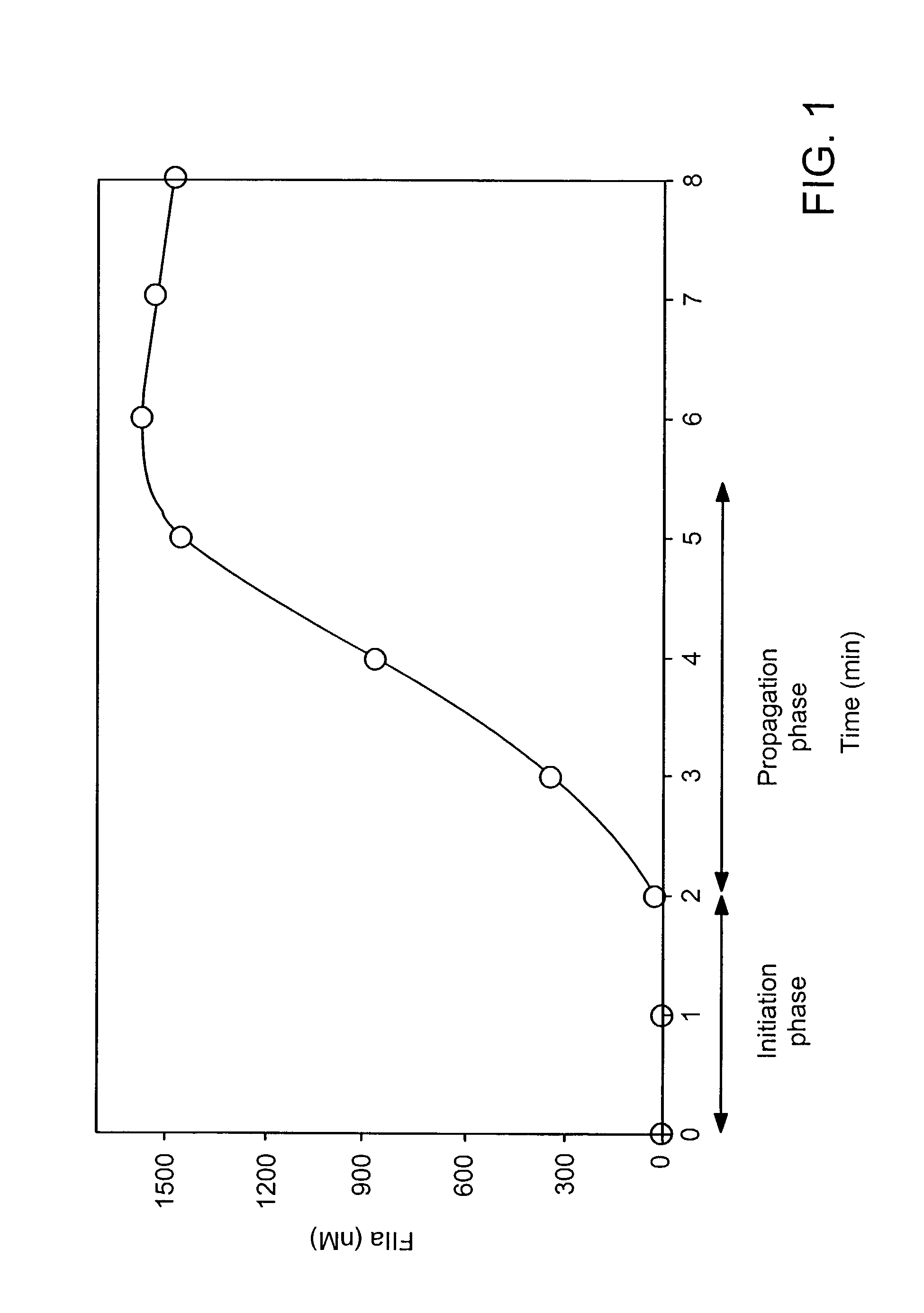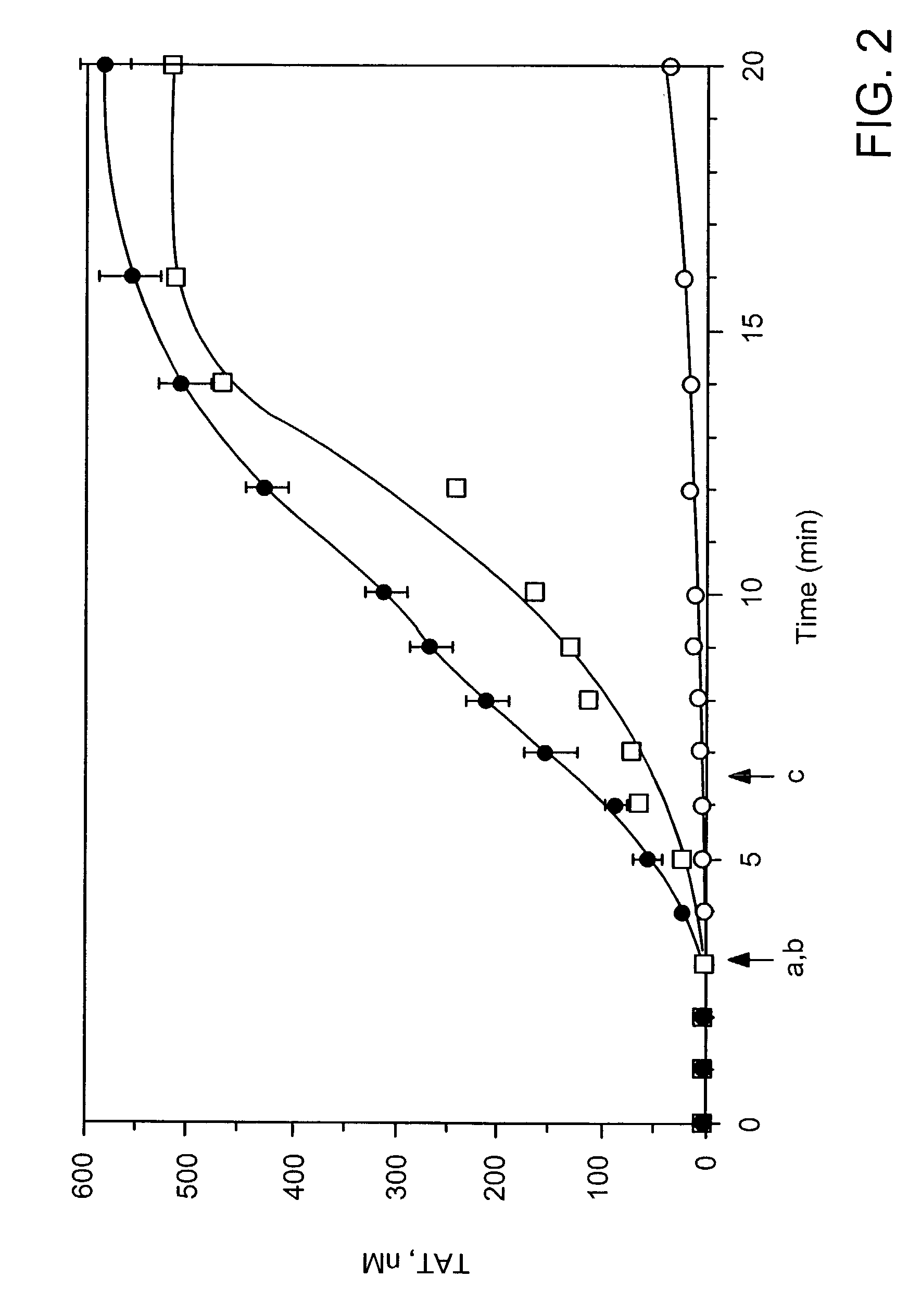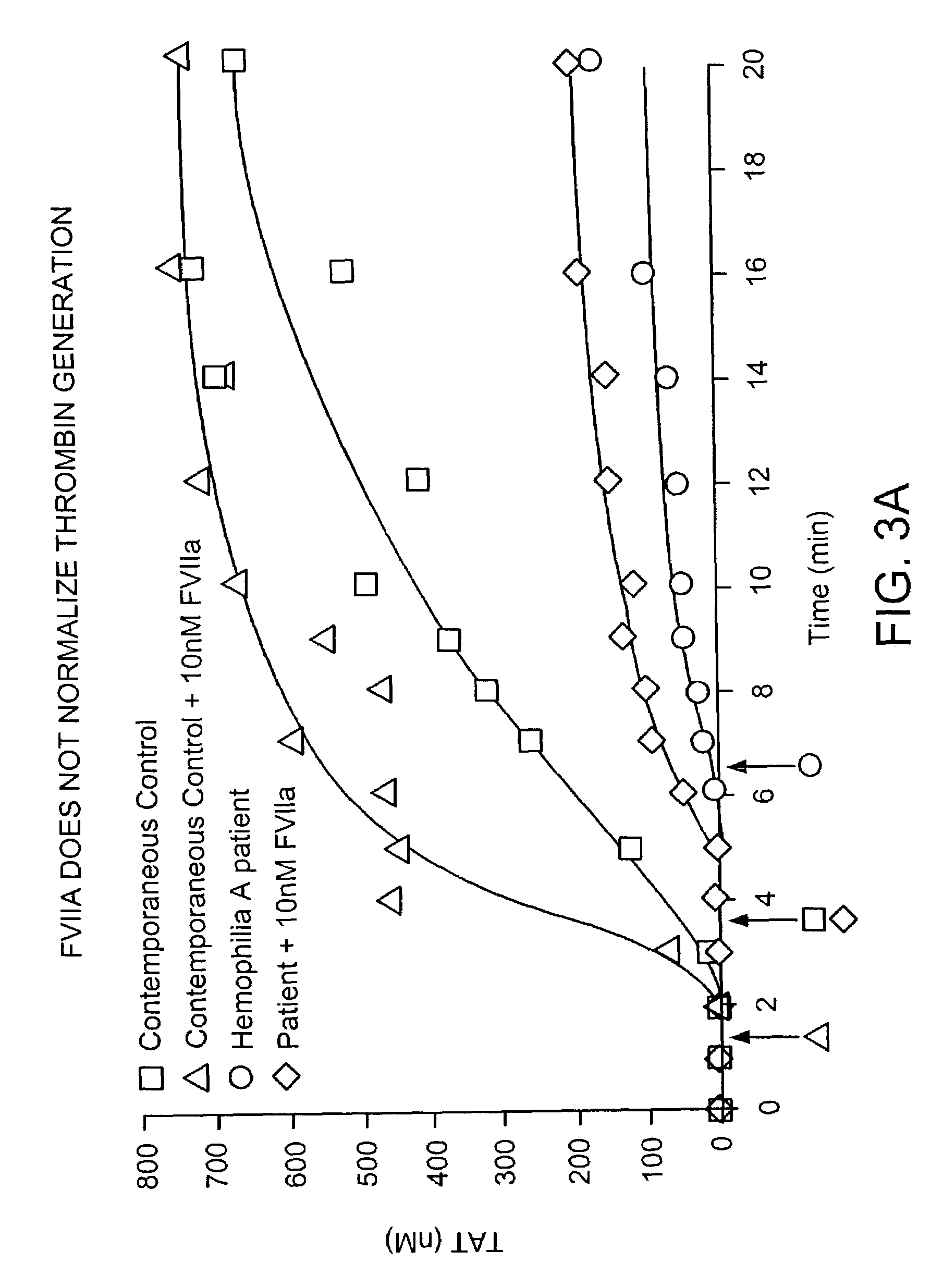Compositions and methods to control bleeding
a technology of composition and bleeding, applied in the field of compositions for altering bleeding, can solve the problems of high consumption of blood factor, prohibitively expensive prior treatment methods for some patients, and high cost of factor viia commercial sources, so as to reduce the need for administering blood coagulation factor, enhance the activity of blood factor, and minimize the cost and inconvenien
- Summary
- Abstract
- Description
- Claims
- Application Information
AI Technical Summary
Benefits of technology
Problems solved by technology
Method used
Image
Examples
example 1
Treatment of Hemophilia A Blood with Factor VIIa
[0101]Clotting in freshly drawn, non-anticoagulated whole blood was performed in 32 tubes (two series per experiment—16 tubes / series). All tubes were loaded with corn trypsin inhibitor (100 μg / ml blood), 12.5 pM relipidated TF / ml blood (PCPS:TF=2,000) in HBS with 2 mM CaCl2 (all tubes in each series except phlebotomy control tube), 10 nM recombinant factor VIIa (all tubes, experiment series only), and equivalent volume factor VIIa dilution buffer (HBS, pH 7.4, all tubes control series only). No more than 35 μl of reagents were loaded in each tube. The zero tube of each series was pretreated using 1 ml of 50 mM EDTA and 10 μl of 10 mM FPRck (diluted in 0.01 M HCl). Normal donor or hemophilia A patient (factor VIII<1%) blood was drawn by venipuncture, delivered into the reagent-loaded tubes, and the tubes were periodically quenched with EDTA and FPRck. The clotting time was observed visually by two observers. Tubes were centrifuged and t...
example 2
Treatment of Induced Hemophilia B Blood with PCPS and Factor VIIa
[0103]Clotting in freshly drawn, non-anticoagulated whole blood was performed in 32 tubes (two series per experiment—16 tubes / series). All tubes were loaded with corn trypsin inhibitor (100 μg / ml blood), 12.5 pM relipidated TF / ml blood (PCPS:TF=2,000) and 50 μg / ml anti-factor IX antibody (antibody was not loaded into one normal control tube) in HBS with 2 mM CaCl2, 10 nM recombinant factor VIIa and varying concentrations of PCPS (0–200 μM) (all tubes, experiment series only) and equivalent volume factor VIIa dilution buffer (HBS, pH 7.4) and PCPS (all tubes control series only). No more than 35 μl of reagents were loaded in each tube. Normal donor blood was drawn by venipuncture, delivered into the reagent-loaded tubes, and the clotting time was observed visually by two observers. Tubes were quenched with EDTA and FPRck in 10 min after clot formation. Tubes were centrifuged and the supernatants were aliquoted for TAT a...
example 3
Factor VIIa Titration in Factor VIII Deficient Plasma
[0104]Factor VIIa at varying concentrations (0–100 nM), 40 μg / ml CTI, 50 μM PCPS, and 30 mM CaCl2 were added to the factor VIII deficient plasma pre-warmed to 37° C. Clotting was initiated by the addition of 12.5 pM (▪) or 25 pM (♦) TF. Dotted lines represent clotting time of normal plasma initiated by corresponding concentration of TF and without factor VIIa addition. The results are shown in FIG. 4.
PUM
| Property | Measurement | Unit |
|---|---|---|
| weight ratio | aaaaa | aaaaa |
| weight ratio | aaaaa | aaaaa |
| concentrations | aaaaa | aaaaa |
Abstract
Description
Claims
Application Information
 Login to View More
Login to View More - R&D
- Intellectual Property
- Life Sciences
- Materials
- Tech Scout
- Unparalleled Data Quality
- Higher Quality Content
- 60% Fewer Hallucinations
Browse by: Latest US Patents, China's latest patents, Technical Efficacy Thesaurus, Application Domain, Technology Topic, Popular Technical Reports.
© 2025 PatSnap. All rights reserved.Legal|Privacy policy|Modern Slavery Act Transparency Statement|Sitemap|About US| Contact US: help@patsnap.com



